Fujian, located on China’s southeastern coast, is a beautiful destination with rich culture and natural beauty. Famous for the Wuyi Mountains, the unique Tulou buildings, and Gulangyu Island with its clear waters and blue skies, the province offers stunning landscapes. Fujian is also a key birthplace of Chinese tea culture, known for famous teas like Tie Guan Yin, Da Hong Pao, and Bai Cha. The scent of tea is linked to fascinating stories and centuries of tradition. Whether exploring nature or tasting fine tea, Fujian offers a memorable travel experience with its unique charm.
I. Natural Beauty Between Mountains and Sea
1. Wuyi Mountains
Wuyi Mountain is both a UNESCO World Heritage site and one of China’s most famous Danxia landforms. The Nine Bend Stream winds through the peaks like a jade ribbon, creating a stunning landscape where clear waters meet red mountains. Visitors can take bamboo raft rides down the stream, enjoying the breathtaking scenery and experiencing the "fairyland" beauty that has been admired for centuries. This area is also home to the famous Da Hong Pao tea trees, making it the birthplace of Oolong tea, where nature and tea aromas blend perfectly.

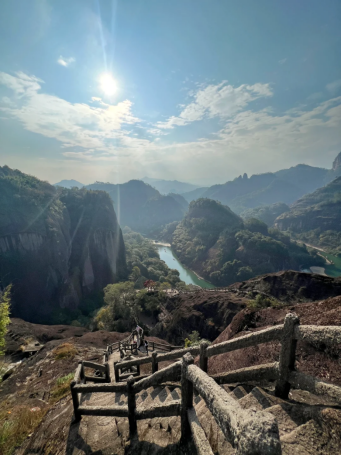
2. Tulou Clusters
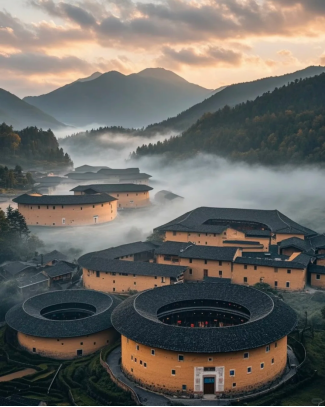
The Tulou clusters in Fujian are known as the "Eastern Fortresses" and are a symbol of Hakka culture. The Yongding Tulou and Nanjiang Tulou are especially famous. The “Chengqi Lou” in Yongding is the largest circular Tulou still standing, with its impressive scale and ingenious internal structure. These structures served as self-sufficient living spaces, reflecting the unity and cooperative spirit of the Hakka people. Each Tulou tells the story of generations of people living together in harmony, where you can almost feel the warmth of history and community.
3. Gulangyu Island
Gulangyu Island is known as the "World Architecture Expo," one of the most romantic islands in Fujian. Once a trading port, it features a blend of Eastern and Western architectural styles. Walking along the island’s pathways, you’ll encounter European-style villas, Gothic churches, and traditional Minnan houses. Another notable feature of Gulangyu is its musical culture, earning it the nickname "Piano Island." Whether strolling along the beach with the sea breeze or stopping to take photos in front of the red-brick villas, every corner of Gulangyu exudes a relaxed and romantic atmosphere.
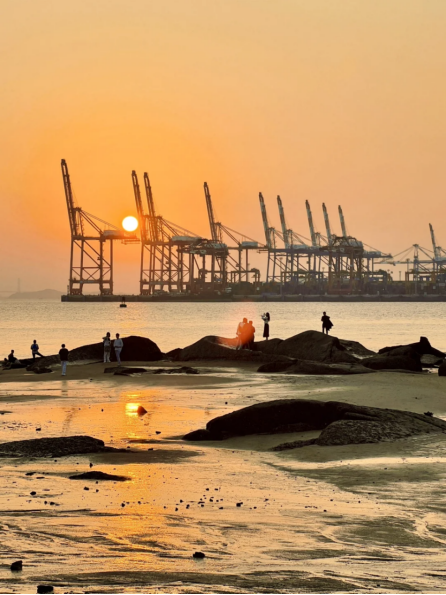
II. Fujian Tea Culture
1. The Legend of Tie Guan Yin
Tie Guan Yin, one of China’s top ten teas, is surrounded by a mysterious legend. Long ago, in Anxi, Fujian, a poor tea farmer worked tirelessly in his tea garden but lived in poverty. One night, he dreamt of the Bodhisattva Guanyin, who led him to a crevice in the mountains to find a treasure. Upon waking, he followed the dream’s guidance and discovered a unique tea tree in the crevice. He carefully nurtured the tree, harvested its leaves, and created a tea that was fragrant, flavorful, and smooth. In gratitude to Guanyin, he named the tea "Tie Guan Yin" (Iron Goddess of Mercy). This legend gives Tie Guan Yin tea a sacred symbolism, making it an important part of Anxi’s tea culture.
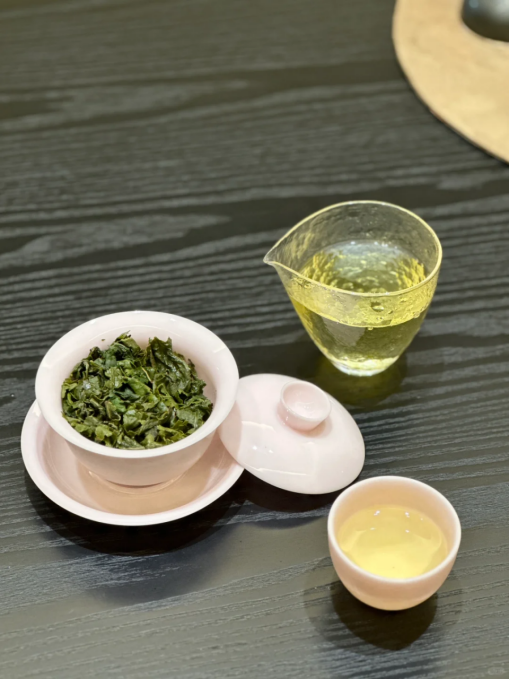
2. The Legend of Da Hong Pao
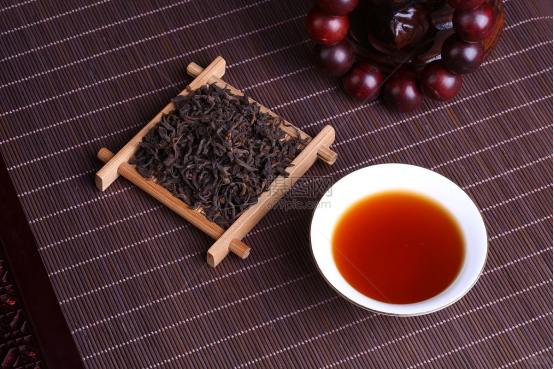
Da Hong Pao from Wuyi Mountain is world-renowned, and its name comes from a story of an emperor’s reward. According to the legend, during the Ming dynasty, the emperor’s mother fell ill, and no doctor could cure her. A scholar brought tea leaves from Wuyi Mountain that successfully healed her. Overjoyed, the emperor ordered a red robe to be draped over the tea tree as a sign of reward and protection. The tea tree became known as "Da Hong Pao" (Big Red Robe), and its leaves, rare and of exceptional quality, were offered as a prized tribute. Today, the ancient Da Hong Pao mother tree near the Nine Bend Stream still attracts tea enthusiasts, keeping the legend alive.
3. The Tea Horse Road and Fujian Tea
Fujian played a crucial role in the history of Chinese tea culture. As a key starting point of the ancient Tea Horse Road, Fujian’s tea was traded globally through the Maritime Silk Road, especially through Quanzhou Port, which connected China and the West. Oolong tea and black tea were the main exports, earning Fujian the title of "Sea Tea Capital." The Tea Horse Road was not only a trade route but also a channel for tea stories, folk legends, and cross-cultural exchanges, making Fujian a bridge connecting Eastern and Western civilizations.
III. Tea Tourism in Fujian
1. Anxi Tie Guan Yin Tea Garden
Anxi, the birthplace of Tie Guan Yin, is known as "China's Tea Capital." Tea tourism begins with a visit to the tea mountains, where visitors can pick tea leaves in the early spring morning or autumn. They can enjoy the aroma of tea mingling with the morning dew. Afterward, they can enter a tea workshop to learn traditional processes like withering, pan-frying, and rolling. The highlight is tasting freshly made Tie Guan Yin, known for its distinctive "lingering fragrance after seven infusions."
2. Wuyi Mountain Tea Village
Wuyi Mountain, famous for its scenic beauty, is also the home of Da Hong Pao. Visitors can explore the Tianxin Rock Tea Village, where they can visit the protected area of the Da Hong Pao mother tree and learn about its legendary history as a royal tribute tea. The village features a tea culture museum offering tea ceremonies and Wuyi rock tea tastings. Drinking tea by the Nine Bend Stream, surrounded by stunning landscapes, deepens the appreciation of the harmony between tea culture and nature.
3. Fuding, the White Tea Capital
Fuding is famous for producing white tea, known as the "Source of White Tea." Visitors can tour the white tea gardens, where they can pick young buds and witness the traditional natural withering process. They will also learn about the unique techniques of making "fire-free tea." Tea farmers will explain the different varieties of white tea, such as Bai Hao Yin Zhen, Bai Mu Dan, and Shou Mei, and guide visitors in tasting the tea's sweet and refreshing flavor. Fuding white tea, with its long-standing health benefits, attracts tea lovers from all over.
IV. Food and Culture: A Taste of Fujian
Fujian’s rich cuisine is another major draw for visitors. The aroma of sha cha mian (Fujian-style satay noodles) fills the streets, with its rich satay sauce, seafood, and tender pork creating an unforgettable flavor. The world-renowned Buddha Jumps Over the Wall is a treasure of Fujian cuisine, combining delicacies like sea cucumber, abalone, and fish maw, cooked with complex techniques into a mouth-watering dish. Hai li jian (oyster omelet) is a beloved local snack, made by frying fresh oysters coated in sweet potato flour and egg until golden, a classic taste cherished by people from Southern Fujian.
Tea culture in Fujian extends beyond the teacup to the dining table, where tea-infused meals bring together the delicate aromas of famous teas with fresh ingredients. Dishes like tea shrimp and Tie Guan Yin braised pork ribs incorporate the fragrance of tea into each bite, offering a unique sensory experience. While savoring these meals, visitors can not only enjoy the flavors but also immerse themselves in the deep-rooted tea culture of Fujian.
V. The unique charm and infinite possibilities of Urumqi
-
Best Time to Visit
-
Spring: Warm weather and fresh green tea leaves make it the ideal time to visit Anxi for Tie Guan Yin and Wuyishan tea gardens.
-
Autumn: Cool weather is perfect for hiking, rafting, and exploring the Tulou (earthen buildings) and other outdoor activities.
-
Avoid: Summer’s high temperatures and the rainy season for a more comfortable experience.
-
-
Transportation Recommendations
-
By Air: Xiamen, Fuzhou, and Quanzhou have international airports, and Wuyishan has flights connecting to major domestic cities.
-
By High-Speed Train: Fujian boasts a well-developed high-speed rail network, with only a few hours of travel between cities like Xiamen, Wuyishan, and Fuding.
-
Within Cities: Public transport, taxis, and car rentals make getting around easy and convenient.
-
-
Accommodation Options
-
Unique Stays: Opt for traditional Tulou houses or eco-friendly tea garden homestays to experience the local rural charm.
-
Luxury Hotels: Xiamen’s seaside resorts and five-star hotels in Fuzhou offer comfortable and high-quality service.
-
-
Important Tips
-
Clothing: Wear comfortable hiking shoes when visiting mountainous or tea garden areas, and bring sunscreen.
-
Summer Protection: Avoid prolonged sun exposure and take precautions against mosquitoes.
-
Food Safety: Ensure seafood and other local delicacies are fresh and hygienic.
-
Tea Shopping: Choose reputable tea shops to ensure you’re buying authentic and high-quality Fujian tea.
-
VI. Where Nature and Culture Merge: Fujian's Story in Tea
Fujian is a land rich in both stunning natural beauty and profound cultural heritage. From the unique Danxia landscapes of Wuyishan to the winding Nine-Bend Stream, from the impressive Tulou clusters to the scenic Gulangyu Island where the sky meets the sea, every view tells a tale of distinctive geography and historical legend. Fujian’s tea culture adds a deeper layer of charm to this beauty—whether it’s the renowned Tie Guan Yin, Da Hong Pao, or Fuding White Tea, each fragrance carries captivating stories and strong cultural ties.
A journey through Fujian is not just a visual feast, but a soul-stirring dialogue with its tea culture. Sip the tea, inhale the fragrance, and listen to the stories—each cup encapsulates the land's emotion and the wisdom of its people. In the mountains and waters of Fujian, find tranquility; in the aroma of its tea, savor timelessness. This experience will deepen your appreciation for the unique charm and warmth of this land.
